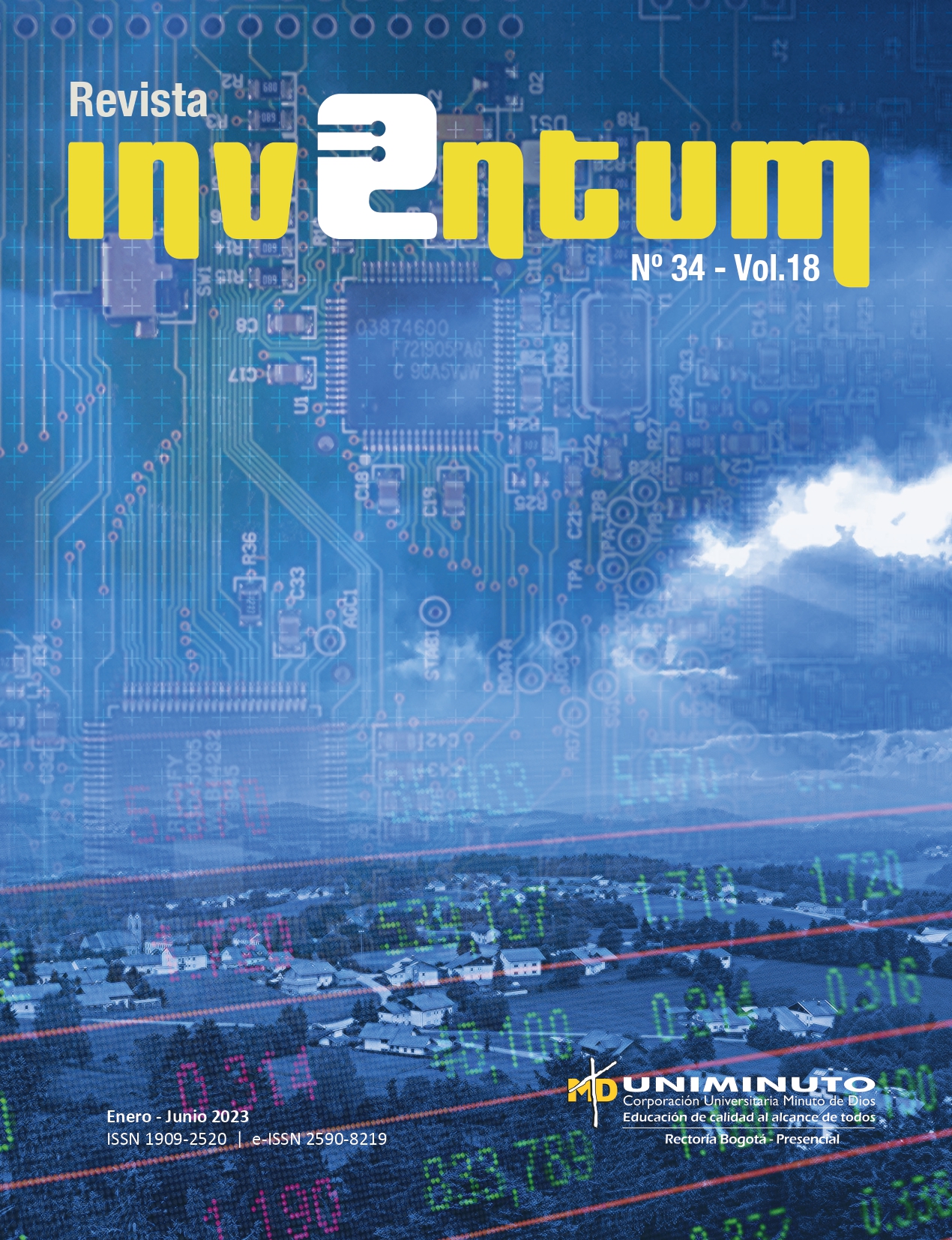Herramientas virtuales para la enseñanza de la Física: Circuito RC
Contenido principal del artículo
Resumen
Este artículo describe el potencial de la simulación, como mediación, con TinkerCad® a través de un circuito RC, en combinación con Python para el aprendizaje de la física a nivel superior. Esta propuesta se ubica en el contexto de la actividad experimental propia de la epistemología de la física, en medio de la situación generada por la pandemia asociada al COVID-19, en específico en el estudio del circuito RC. Se obtendrán datos transitorios de voltaje y corriente en dos montajes, real y simulado, que serán analizados con Python ® en un editor online. Los resultados señalan que la articulación adecuada de TinkerCad y Python, en montajes simulados, son prometedores para el aprendizaje colaborativo de la física a partir de la actividad experimental.
Detalles del artículo
Sección
Se solicita a los autores que diligencien el documento de cesión de derechos de autor sobre el artículo, para que sea posible su edición, publicación y distribución en cualquier medio y modalidad: medios electrónicos, CD ROM, impresos o cualquier otra forma, con fines exclusivamente científicos, educativos y culturales
- La obra pertenece a UNIMINUTO.
- Dada la naturaleza de UNIMINUTO como Institución de Educación Superior, con un modelo universitario innovador para ofrecer Educación de alta calidad, de fácil acceso, integral y flexible; para formar profesionales altamente competentes, éticamente responsables y líderes de procesos de transformación social, EL CEDENTE ha decidido ceder los derechos patrimoniales de su OBRA, que adelante se detalla para que sea explotado por ésta
- El querer de EL CEDENTE es ceder a título gratuito los derechos patrimoniales de la OBRA a UNIMINUTO con fines académicos.
Cómo citar
Referencias
REFERENCIAS
D. R. Sokoloff, K. Cummingsy, and R. K. Thornton, Interactive Lecture Demonstrations, Active Lear-ning in Introductory Physics, Hoboken, NJ: Wiley, 2004. (Wiley & Sons, Incorporated, 2004).
D. R. Sokoloff and R. K. Thornton, “Using interactive Lecture demostrations to creative an active learning environment”, Phys. Teach., vol. 35, n.º 6, pp. 340-347, sep. (1997), 340, .org/doi: 10.1119/1.2344715
J. D. G. Agudelo and G. G. García, “Aprendizaje significativo a partir de prácticas de laboratorio de precisión”, Latin-American J. Phys. Educ., vol. 4, n.º 1, (2010), pp. 149-152, ene. 2010. http://www.lajpe.org/jan10/22_Gabriela_Garcia.pdf
E. Martinez, V. Carbonell, M. Florez, and J. Amaya, “Simulations as a new physics teaching tool”, Comput. Appl. Eng. Educ., vol. 18, n.º 4, , pp. 757-761, dic. 2010, 757, doi: 10.1002/cae.20266.
K. E. Chang, Y. L. Chen, H. Y. Lin, yand Y. T. Sung, “Effects of learning support in simulation-based physics learning”, Comput. Educ., vol. 51, n.º 4, pp. 1486-1498, dic. (2008), 1486, doi: 10.1016/j.compedu.2008.01.007.
J. O. Breto, M. L. M. Pérez, yand L. Jorge, “Simulaciones sobre EJS para aprender fFísica”, Latin-American J. Phys. Educ., vol. 13, n.º 2, pp. 1-6, jun. (2019), 1 https://dialnet.unirioja.es/servlet/articulo?codigo=7325395.
A. Raviolo and M. Alvarez, “Uso y creación de simulaciones en la formación del profesorado: Unidad didáctica sobre el movimiento oscilatorio armónico”, Lat. Am. J. Phys. Educ., vol. 6, nº 4, pp. 628-638, dic. (2012), http://www.lajpe.org.
R. Haryadi and H. Pujiastuti, “PhET simulation software-based learning to improve science process skills”, J. Phys. Conf. Ser., vol. 1521, n.º 2, art. 022017, (2020), doi: 10.1088/1742-6596/1521/2/022017.
M. Spodniaková-Pfefferová, “Computer simulations and their influence on students’ understanding of oscillatory motion”, Informatics Educ., vol. 14, n.º 2, pp. 279-289, oct. (2015), 279, doi: 10.15388/infedu.2015.16.
I. Kotseva, M. Gaydarova, K. Angelov y, and F. Hoxha, “Physics experiments and demonstrations based on Arduino”, AIP Conf. Proc., vol. 2075, n.º 1, p. 180020, feb. 20192075, (2019), 1, doi: 10.1063/1.5091417.
F. Önder, E. B. Önder y, and M. Oğur, “Determination of Diode Characteristics by Using Arduino”, Phys. Teach.,vol. 57, n.º 4, pp. 244-245, abr. (2019), 244, doi: 10.1119/1.5095382.
A. Moya, “Studying Avogadro’s Law with Arduino”, Phys. Teach., vol. 57, n.º 9, pp. 621–623, dic. (2019), 621, doi: 10.1119/1.5135793.
F. Önder, E. B. Önder y, and M. Oğur, “Determining Transistor Characteristics with Arduino”, Phys. Teach., vol. 58, n.º 6, pp. 422-424, sep. (2020), 422 doi: 10.1119/10.0001842.
N. Pereira, “Measuring the RC time constant with Arduino”, Phys. Educ., vol. 51, n.º 6, art. (2016)
, sep. 2016, doi:10.1088/00319120/51/6/065007.
A. Moya, “An Arduino experiment to study charge-voltage relationships in capacitors”, Phys. Educ., vol. 54, n.º 1, art. 015005, nov. (2019) 1, doi: 10.1088/1361-6552/aaea1d.
C. Galeriu, C. Letson y, and G. Esper, “An Arduino Investigation of the RC Circuit”, Phys. Teach., vol. 53, n.º 5, (2015)pp. 285-288, 2015, doi: 10.1119/1.4917435.
A. Moya, “Connecting Time and Frequency in the RC Circuit”, Phys. Teach., vol. 55, n.º 4, (2017) pp. 228-230, abr. 2017, doi: 10.1119/1.4978721.
P. Rocca, F. Riggi y, and C. Pinto, “Remotely teaching Arduino by means of an online simulator”, Phys. Educ., vol. 55, n.º 6, art. (2020), 63003, sep. 2020, doi: 10.1088/1361-6552/abaa21.
J. Payne, Python for Teenagers Learn to program like a Superhero!, (Deerfield Beach, FloridaFL, USA.: Apress, 2019).





